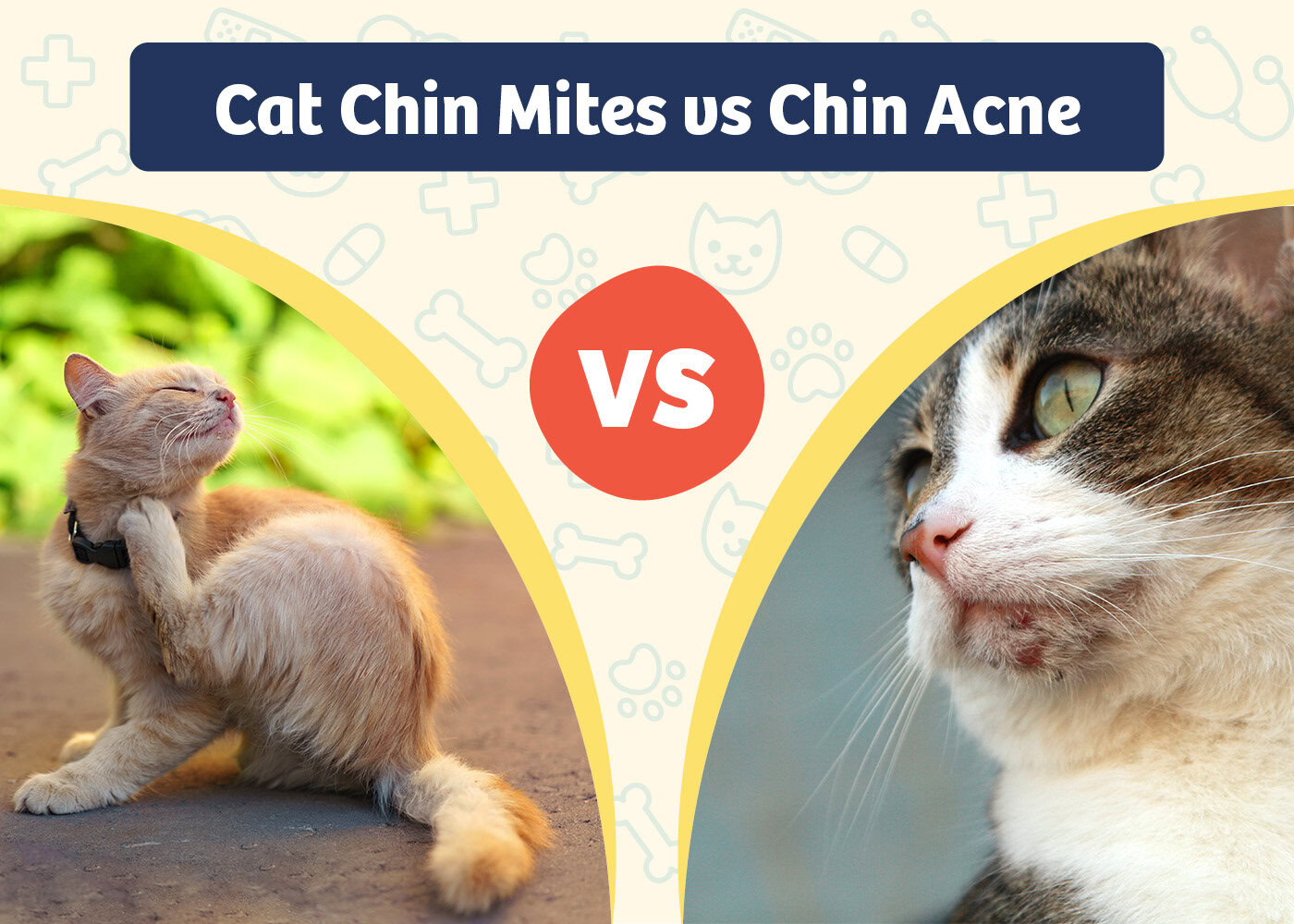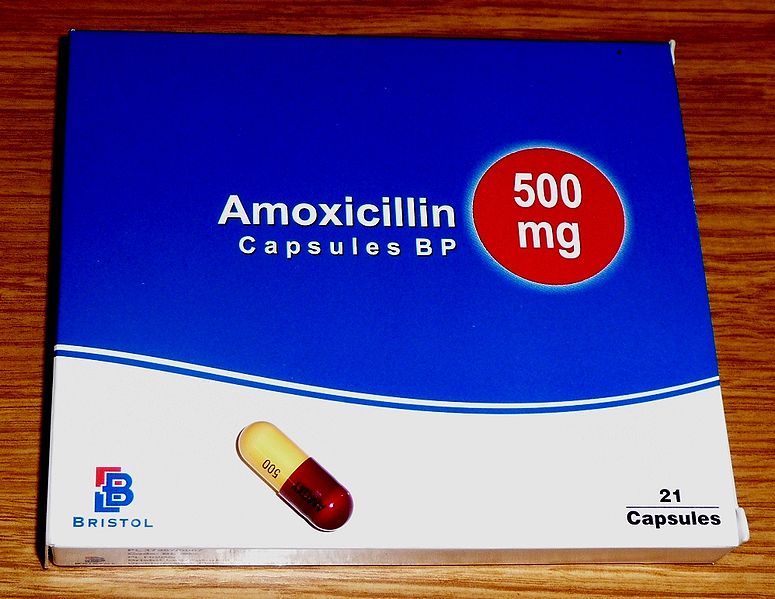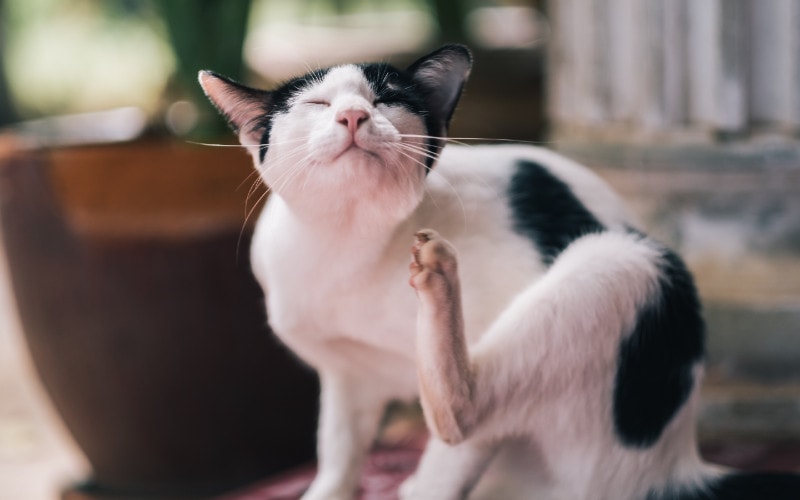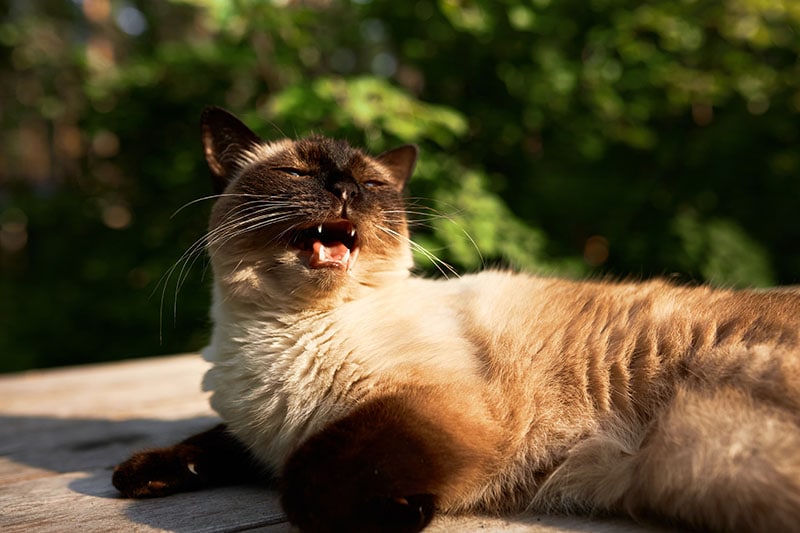VET APPROVED

The information is current and up-to-date in accordance with the latest veterinarian research.
Learn more »Have you ever rubbed or scratched your cat’s chin and ended up with weird black debris or loose scabs on your fingers? Did your cat seem to (temporarily) enjoy the attention and follow it up with excessive scratching or rubbing?
Feline acne, or chin acne, is a potential cause for such signs in cats and is a common disease. However, another possible cause is chin mites. We look into both medical conditions here, go over how to tell the difference between them, and more importantly, explain how best to manage them.
| Chin Acne: | Chin Mites: |
| Presence of blackheads on chin that look like black specks or powdery debris | Presence of black scabs on chin |
| Can be intermittent or chronic | Severity depends on the type of mite present |
| Caused by keratin trapped in hair follicles | Can be localized or widespread |
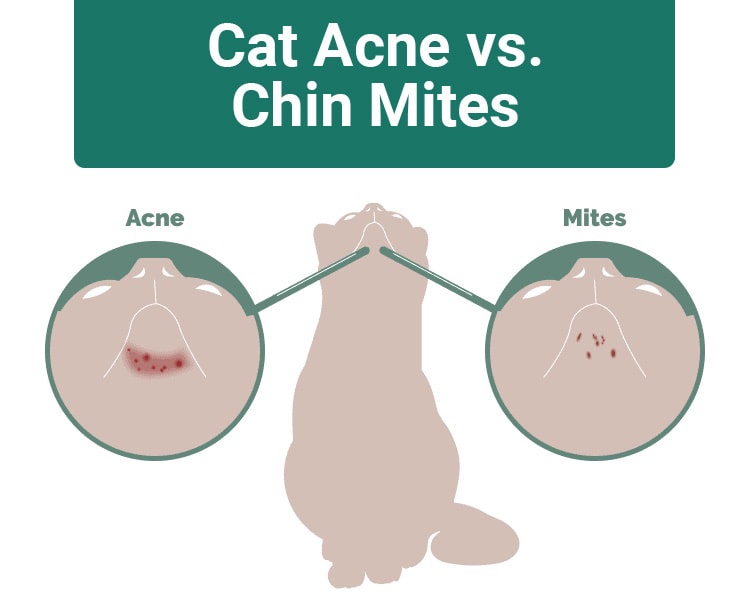

Chin Acne — An Overview
Feline acne, or chin acne, is a common disease in cats. It is characterized by the presence of comedones (i.e., blackheads) on the chin, along with associated secondary changes to the skin, especially in more advanced/severe cases. In some cats, it is a once-off occurrence. Others may have it recur intermittently, and still others can have chin acne as a chronic issue.
Unfortunately, the underlying causes of chin acne are poorly understood. That said, it seems to develop because of follicular keratinization. The mechanism behind such excess keratin production remains to be determined. When keratin becomes trapped in hair follicles, it leads to blackhead formation. If these blackheads subsequently become infected with bacteria, pustules (or pimples) develop, which resemble acne in people. In cats, acne is typically limited to the chin area, hence the name.
Research on chin acne has failed to identify any predisposed breeds, and no difference in occurrence between males and females has been described. The disease is perhaps more commonly identified in cats between the ages of 2 and 4 years.
Various predisposing or contributory factors have been identified. These include poor grooming habits, allergic skin disease (contact or atopic dermatitis), bacterial overload (dirty food bowls), sensitivity to food or chemicals, a poor or suppressed immune system, stress, viral infection, abnormal sebum production/hyperactive sebaceous glands, concurrent infection or disease, and hormone imbalances.
Causes of Cat Chin Acne
There is a correlation between chin acne and using plastic food or water bowls. It was first thought that affected cats had a contact allergy to the plastic material; however, now it is believed to be because of excessive bacteria residing on the plastic bowls, which subsequently leads to acne development.1 With tiny abrasions on the surface of plastic bowls, cleaning them by hand is much more difficult than glass, stainless steel, or ceramic varieties. These tiny abrasions tend to trap bacteria. Ideally, in cats prone to chin acne, switching to any of the more impermeable types of bowls (e.g., ceramic) and ensuring frequent washing is essential.
Allergies are also often implicated in cases of chin acne. Cats can manifest allergies to specific components of their diet or various substances (i.e., allergens) in their immediate environment as signs of skin disease, including chin acne. While allergies can contribute to the development of chin acne in cats, it is worthwhile mentioning that cats will typically have signs of skin disease affecting other areas of their body, not just isolated to the skin on their chins.
In other words, cats with skin allergies may have signs of pruritus (itching with associated licking, chewing, or scratching) elsewhere on their bodies, along with findings of ear infections and alopecia (hair loss), among other conditions.
Signs of Cat Acne
Cats with chin acne typically present with pruritus (itchiness) of the skin on the chin, leading to increased scratching of the area. Closer examination of the skin often reveals black scabs on your cat’s chin or powdery debris (which can resemble or be confused for flea dirt) and a generally dirty or possibly greasy appearance and feel.
In some cases, the blackheads can become infected. In more severe cases, the upper and lower lips can also be involved, with blackheads and pimples in these areas. Cats with chronic cases of acne may have hard, crusty lesions that are painful to the touch.
The disease is typically self-limiting, but in more severe cases, such as those with draining pustules, it may be itchy and painful if not properly managed and require antibiotic therapy, either topically or even systemically (oral medication).
What Else Can Look Like Chin Acne?
Important differentials to consider and rule out when a diagnosis of chin acne is suspected include mange mites, fleas, fungal infections, allergies, and bacterial infections. To investigate for such causes, ideally, a skin scraping should be done (in search of mites), skin cytology (assessing for the presence of bacteria or yeast), and a dermatophyte culture (to screen for ringworm as a potential cause).
If these tests are negative, additional diagnostics that may be necessary to look for an underlying cancerous or immune-mediated disease process include a skin biopsy.
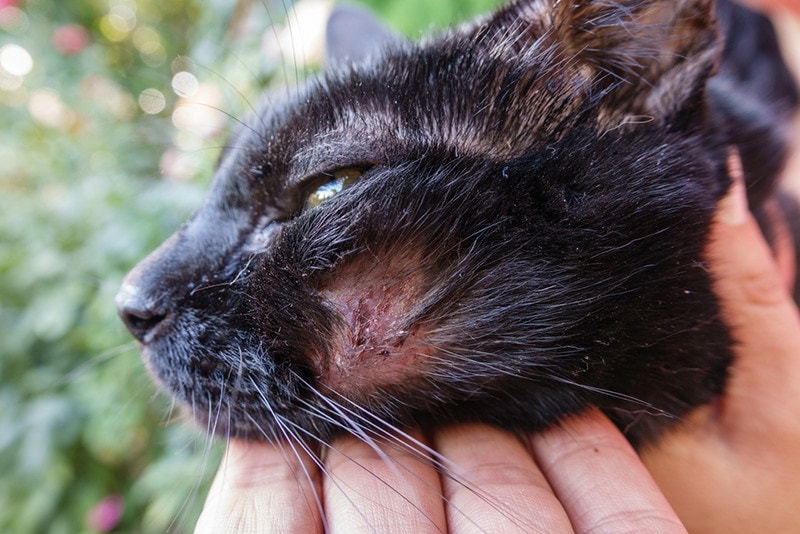
How Is Chin Acne Treated?
Treatment of chin acne is typically centered on improved hygiene. It is important to note that in many cases, treatment is only capable of managing the disease rather than curing it. In addition to replacing plastic bowls/plates with impermeable or non-porous materials and ensuring frequent washing, other practices can be employed to limit clinical signs associated with the disease.
- Warm water compresses
- Omega-3 fatty acid supplementation
- Cleaning of the area twice daily using chlorhexidine, benzoyl peroxide, or specific types of shampoo (e.g., antiseborrheic)
Depending on the extent of the disease, particularly in cases with pustule formation, your local veterinarian may recommend further treatment with either one or a combination of the following:
- Antibacterial or antifungal shampoos
- Topical antibiotics
- Systemic antibiotics
- Steroid therapy, either injectable, oral, or topical
While some cats might not show as good of a response to treatment as others, most cases tend to improve with treatment.
- Switch food bowls.
- Minimize stress.
- Improve hygiene.
- Check for allergies.

Chin Mites — An Overview
Chin mites are an important differential for suspected feline acne. Various mites can be found on the chins of cats, including the following species: Cheyletiella, Otodectes (may be limited to the ear canals only but more severe cases can have widespread skin involvement), Demodex, Trombiculid, Sarcoptes, Notoedres, and Lynxacarus. However, if mites are present, they are not limited to just the chin region; they are often present elsewhere on the body, like the face, head, chin, ears, neck, etc.
In other words, there is no specific chin mite in cats. The presence of mites may also contribute to or even worsen chin acne if already present, and these cases may be a bit more challenging to diagnose and manage. If your cat presents with skin changes limited to the chin, it’s more likely to be chin acne than mites.
Some of these mites can be contagious to other cats, dogs, and even people in their immediate/home environment. It is possible to see certain mites with the naked eye, especially if large numbers are present (for instance, Cheyletiella, often referred to as “walking dandruff”), but this is not the case for all species, and not being able to see the presence of mites does not exclude them as a possible underlying cause.
Signs of Chin Mites
Since mites are considered a differential for chin acne, the clinical signs can be similar, including pruritus (itching), alopecia (hair loss), papules (small skin bumps), redness of the skin, and even scabbing. Cats can vary significantly in their response to mites being present on their skin. Some cats can show intense irritation and secondary skin changes (often from self-trauma, such as scratching), whereas others may have no clinical signs.
Additional diagnostics that may be necessary to diagnose mite infestation in cats include doing a skin scrape (either superficial or deep, depending on the clinical suspicion and which type of mite is considered more likely) or trichogram (plucking a piece of hair), using a flea comb, or performing a tape test and looking for the presence of mites using a microscope.
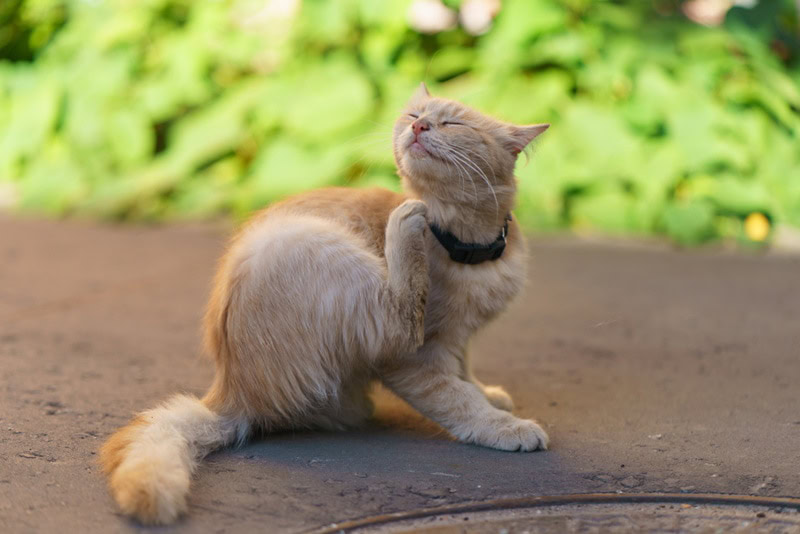
How Are Mites Treated?
Treatment for mites depends on the type of mite identified. Also, depending on the extent of mite infestation (localized versus involving the skin over most of the body), further investigation may be necessary to look into potential systemic diseases affecting immune system competence.
Examples of such systemic diseases that may cause widespread mite infestation include diabetes mellitus, cancer, and feline retroviral infections (feline immunodeficiency virus or feline leukemia virus). For localized mite infestations, topical medication is generally adequate for treatment. Oral medication alternatives are also available for cats that won’t tolerate topical treatment or that are hypersensitive to such treatment. Most of the available spot-on products are effective for up to 4 weeks, but some cats may require more frequent treatment to control clinical signs and prevent a recurrence.
For cases with a suspected/confirmed underlying systemic disease leading to widespread mite infestation, further treatment for whatever disease process is present would also be required (e.g., insulin injections for cats with diabetes mellitus).
You should contact a vet if you have any additional questions or want to have your cat assessed.

Summary
Cat chin acne and chin mites have overlapping presentations, including blackheads, pimples, reddening of the skin, and signs of skin irritation leading to scratching and rubbing. Both conditions are treatable, with various strategies available, and some cases (especially ones with more severe signs) may require a combination of therapies.
Unfortunately, particularly in the case of chin acne, some cats may have a recurrent disease that requires long-term treatment. Neither condition is life-threatening; however, if systemic diseases are present that have led to either chin acne or an infestation with mites, the prognosis for long-term survival may be more guarded (for example, underlying immune-mediated disease or hormonal imbalance).
- An evaluation of the clinical, cytological, infectious and histopathological features of feline acne
- Chin Dermatitis in a Cat
- Feline Acne: A Retrospective Study of 74 Cases (1988–2003)
- Is Topical or Systemic Antimicrobial Therapy More Effective for the Treatment of Feline Acne With Secondary Bacterial Infection?
Featured Image Credit: Melissa Tate, Shutterstock
